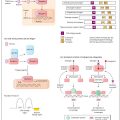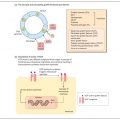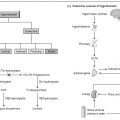
42-year-old Mr J-P T was referred to the hypertension clinic of his local hospital as his GP had established that he had hypertension in the order of 180-190/105-110. An ECG showed evidence of early left ventricular hypertrophy but fundoscopy was normal. Blood tests were taken and the results showed Na+ 144mmol/L, K+ 2.8mmol/L, with alkalosis and normal renal function. Repeated tests confirmed the hypokalaemia. Estimation of plasma renin and aldosterone at 0800 h with the patient recumbent showed elevated aldosterone concentrations and suppressed renin activity, consistent with a diagnosis of primary hyperaldosteronism. An abdominal MRI scan was done that revealed a 4 cm mass in the left adrenal gland. Mr T was treated with spironolactone to control his blood pressure and correct the hypokalaemia and after 8 weeks his blood pressure was normalized and he underwent adrenal surgery and removal of a left-sided adrenal adenoma. Postoperatively, the spironolactone was withdrawn and his blood pressure remained within normal limits on no therapy.
Aldosterone is the physiological mineralocorticoid of the body. In other words, it is an adrenal corticosteroid which affects cation concentrations and movements, specifically those of sodium (Na+) and potassium (K+).
Stay updated, free articles. Join our Telegram channel

Full access? Get Clinical Tree








